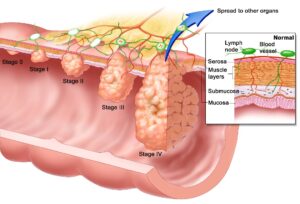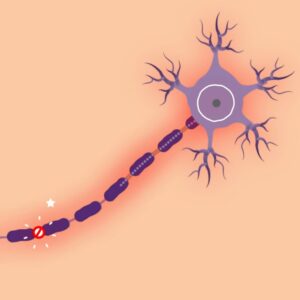Case Studies
Disclaimer: Conditions listed below are for educational purposes only, and is not intended to make any claims that stem cell therapy can treat any of the listed conditions, unless an FDA approval of such was obtained. Each practitioner needs to carefully evaluate current clinical evidence and individual patient needs, and make sound judgment as to treatment approach
ALCOHOLISM
Below is a sample of existing clinical evidence:
ANTI-AGING
Below is a sample of existing clinical evidence:
ASTHMA
Below is a sample of existing clinical evidence:
AUTISM
Below is a sample of existing clinical evidence:

70-year-old male physician (pain specialist) who has suffered from over 40 years of severe musculoskeletal pain (back, neck, shoulders, hands, knees, etc.) due to various athletic injuries sought help from cell therapy. Due to time constraint, he received 2cc of regenerative cells and another 2cc 7 days later. He began to notice signifiant reduction in his pain level, with better energy level and more positive mood, and also noticed that his equilibrium had significantly improved (instead of having to hold on to something to put on his pants for many years, he was surprised to find that he could balance himself while putting his pants without holding onto anything). He was so impressed with these results that he began to use regenerative cells extensively in his own clinic.
CHRONIC PAIN
Below is a sample of existing clinical evidence:
COPD
Below is a sample of existing clinical evidence:
Below is a sample of existing clinical evidence:
DEGENERATIVE DISC DISEASE
Below is a sample of existing clinical evidence:
ECZEMA/DERMATITIS
Below is a sample of existing clinical evidence:
 61 year old male with history of esophageal cancer in 2012 and cancer of the tongue with partial tongue removal. He received the initial cell therapy (2 infusions 2 weeks apart) completed in early September 2016, and by November in his examination, no pre-cancerous changes was detected, thus he was considered cancer-free the first time in over 4 years. Following endoscopies & biopsies every 3 months continues to show cancer-free status. He elected to get a cell therapy every 3 months to maintain good progress.
61 year old male with history of esophageal cancer in 2012 and cancer of the tongue with partial tongue removal. He received the initial cell therapy (2 infusions 2 weeks apart) completed in early September 2016, and by November in his examination, no pre-cancerous changes was detected, thus he was considered cancer-free the first time in over 4 years. Following endoscopies & biopsies every 3 months continues to show cancer-free status. He elected to get a cell therapy every 3 months to maintain good progress.
Hair Loss & Anti-Aging Case Study
44 yo female with complaints of hair loss. Thyroid problems and anemia ruled out. No doctor has had an explanation. Symptoms seemed to correlate with receiving 30 plus vaccine injections for the US Peace Corps in 1998, or the multiple digestion infections while living in SE Asia.
Patient describes: “I had a 2 cc IV of CharaCore and a month later a 3 cc IV. Within a few weeks of the first one, I stopped pulling hair out of my shower drain (it was a clump every AM). I also only had a couple hairs in the sink instead of constantly cleaning up hairs. There is almost nothing in my hairbrush. I’m a healthcare provider and have done many things for my hair. NOTHING has worked like this! I have so many new hairs growing in. It is worth it!
I also noticed I have had better reflexes in my soccer games. I have scored in the last 18 out of 21 games. That is unusual. It may not be related but it seems to be. I have also noticed small warts that were on my inner heels are completely gone. They have been there since 2009. I have also noticed that I am finishing projects that have been lingering for months to years. Again, maybe not related. None of these things were serious health concerns. However, I feel they were signs that something or things were not optimal. I wanted a long-term healthy life.
Whatever is happening, I love it! Money well spent.
– from Oregon”
Hearing Loss
Below is a sample of existing clinical evidence:
“We have restored hearing in 19 years old white female with autoimmune hearing loss with autologous adipose tissue derived stem cells… Systemic infusion of hASCs (human Adipose tissue-derived Stem Cells) (in mouse model) significantly improved hearing function and protected hair cells in established EAHL (Experimental Autoimmune Hearing Loss)… the restoration is due to the paracrine activities of human stem cells, since there are newly regenerated mice spiral ganglion cells, not human mesenchymal stem cells derived tissue given by intraperitoneally.”– “The paracrine effect of mesenchymal human stem cells restored hearing in β-tubulin induced autoimmune sensorineural hearing loss,” Yoo et al, Hearing Research, 2015
HEART DISEASE
 Below is a sample of existing clinical evidence:
Below is a sample of existing clinical evidence:
KIDNEY FAILURE
Below is a sample of existing clinical evidence:
LIVER CIRRHOSIS
Below is a sample of existing clinical evidence:
LUPUS
Below is a sample of existing clinical evidence:

47 year old female suffered from chronic Lyme disease. She reported the following changes within 20 days of her first stem cell treatment:
- No longer had seizures (was having seizures 2 to 3 times a day);
- No longer experienced migraines (was having daily migraines since 2001);
- No longer had neurological issues (was having significant mental confusion prior to treatment);
- “Crushing 24/7 bone pain” was at least 80% better, to the point where “it’s hard to call it pain after what it did feel like.”
- No longer experienced night-blindness or farsightedness, not needing reading glasses anymore;
- Was diagnosed with stage 1 kidney disease, which resolved after treatment;
- Open sores from skin rash/excessive scratching were healed;

- Had one varicose vein, which was slowly disappearing;
- Blood pressure was dangerously low, but became normal after treatment;
- Blood sugar levels were in the 40’s, but improved to the 80’s after treatment;
- Could barely walk without serious pain that triggered seizures prior to treatment, but now able to speed-walk for 2 miles, run 1/4 of a mile, and run up and down 3 flights of stairs.
MACULAR DEGENERATION
Below is a sample of existing clinical evidence:
MIGRAINES & TENSION-TYPE HEADACHE
Below is a sample of existing clinical evidence:
Below is a sample of existing clinical evidence:
67 year old Caucasian male with history of cervical spinal stenosis, bone spur in the spine, joint laxity and Lyme disease sought stem cell therapy to help improve joint health and relieve neck/back pain. Patient had stopped exercising for 9 months due to pain, and said his joints were “cracking” and “popping out of place,” and felt like the muscles/tendons around the joints were “pulling away.” Patient received stem cell treatment intravenously as well as injections locally in the cervical region. At the follow up appointment 3 weeks later, patient said the pain in his neck and back were completely gone, and the muscles felt tighter around his joints, that his body is “tightening up.” Incidentally, his shoulders also felt better.
At follow-up appointment, pt mentioned that he had had heart palpitations for 15 years, likely due to Lyme disease. In the past, every night when he slept, if he turned to lay on his side (either left or right), he would have heavy palpitation for about a minute. However, one week after stem cell treatment, he no longer had any of these palpitations.
46 year old female with history of osteoarthritis from extensive athletic activities received cell therapy of 3 regenerative cell treatment in total, and in her last MRI of the knee, there was regrowth of her cartilage, which her orthopedic doctor had never seen.
OSTEOPOROSIS
Below is a sample of existing clinical evidence:
PARKINSON’S
Below is a sample of existing clinical evidence:
ERECTILE DYSFUNCTION
Below is a sample of existing clinical evidence:
SARCOIDOSIS, FIBROMYALGIA
52 year-old male with history of sarcoidosis, fibromyalgia, Barrett’s esophagus, acid reflux, diverticulosis, testosterone deficiency and intermittent insomnia was exposed to toxic gas in late teens, for over 20 years had suffered from persistent shortness of breath, pain, fatigue, and inability to function. He also had periodic flareups where he experienced severe pelvic pain, in the area of prostate, bladder and large intestines.
2 days after his first cell therapy session, his close friend didn’t recognize him on the phone, as he was speaking with a deeper and stronger voice. He feels that his voice has gone back to how it was when he was younger, and he is now able to speak for a long time without choking/coughing/discomfort (which he would in the past, within 5 minutes of talking).
ld have definitely triggered such symptoms in the past. Since then, he has been able to get back to eating foods like steak, pasta, pizza, chocolate, and even French fries that he was not able to eat for years. In the past, his liver, joint, bladder, prostate would all get inflamed after eating soy sauce, yet now he recovers quickly, and is not having those issues.
He has been able to breath much better, no longer needing daily scheduled inhalers, even in cloudy weather that would have triggered breathing problems in the past. He also noticed that his back and spine are loosening up after being stiff & “locked up” for years. He also noticed that his urine stream is now stronger, almost back to how it was when he was a teenager, no longer with urinary frequency and hesitancy. He also no longer has flareups of cystitis, prostatitis or debilitating colon issues.






